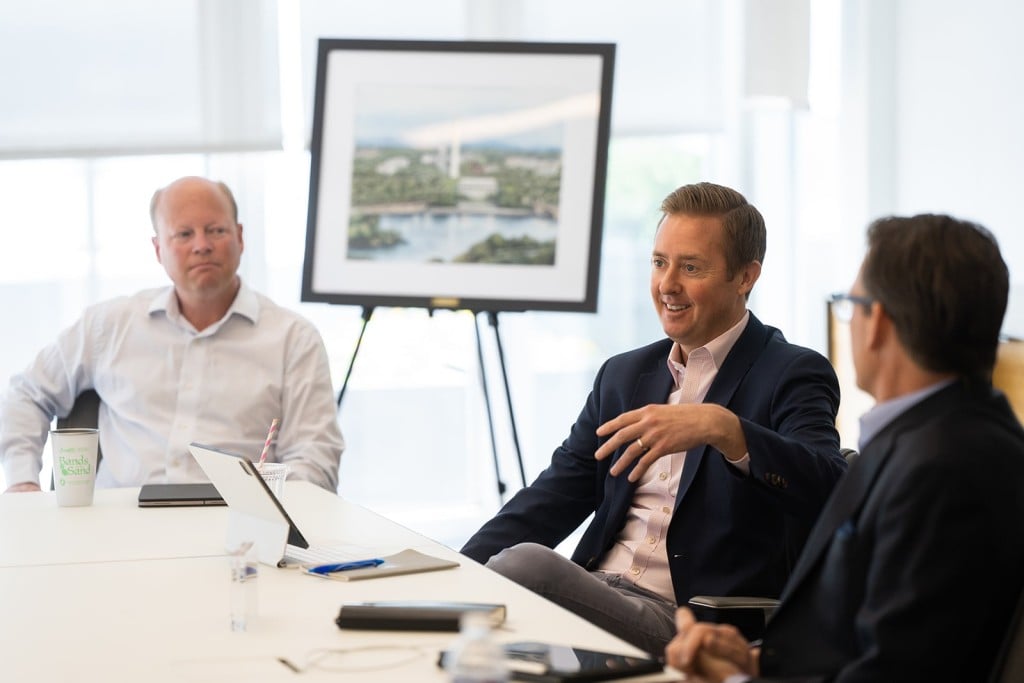Contributors
Related Articles
Stay Up To Date
Something has gone wrong, check that all fields have been filled in correctly. If you have adblock, disable it.
The form was sent successfully
The best businesses don’t just grow. They lead. By shaping their markets and scaling smartly, they stay ahead when others fall behind.
In growth equity investing, the companies that create the most lasting value tend to do more than simply participate in promising markets. They shape them. To us, leadership is not about being the biggest in a given year or quarter. It is about building the kind of advantages that deepen with time, the kind of relevance that makes a business essential to its customers, and the kind of resilience that allows it to thrive across cycles. When a company takes that kind of position in a market that is itself expanding, the effects on long-term compounding can be extraordinary.
Leadership can produce benefits that feed on themselves. The company at the center of a category becomes the one customers turn to first. They do so out of trust, and that trust creates loyalty. Loyalty, in turn, produces information. Every transaction, every interaction, every request for improvement adds to a reservoir of insight.
The leader then uses that insight to refine its offering. Product improvements can attract more customers, which would in turn generate still more feedback. Round after round, the cycle often strengthens the company’s position. What starts as an advantage in product quality or customer service can become a deeper moat that rivals struggle to cross. Over years, the pattern of compounding becomes visible in both operating results and investor returns.
Tipping the Scale
Scale accelerates this process. In traditional industries, larger production runs lower costs and secure better terms from suppliers. In services, a broader footprint and a more recognizable brand make each incremental customer less expensive to acquire. In platform businesses, scale becomes something even more potent. Each new participant adds value for those already inside, creating a pull that makes the leader’s position more entrenched with every step.
These forces do not just defend market share. They can create the foundation for expansion into adjacent opportunities. A trusted business can introduce new offerings with credibility and find acceptance quickly. Scale is not simply a matter of current size. It becomes a source of momentum that can carry a leader into the next decade of growth.
Leaders also draw people. The best engineers, designers, and operators want to spend their time where it will matter most. A leading company can give them that platform. Their work reaches more customers, gains more visibility, and has greater impact. That magnetism sets in motion another reinforcing cycle. The better the talent, the more innovative and effective the organization becomes, which further strengthens its position.
The same magnetism extends to partners. Suppliers choose to prioritize their largest and most reliable customers. Distributors commit resources where they believe success is most likely. Even regulators often look to industry leaders as they develop standards. Over time, these patterns embed the leader within the very structure of the market, making displacement increasingly difficult.
Strength in Numbers
Leadership tends to show up clearly in the financial statements. A strong brand, loyal customers, and efficient operations often translate into higher margins and steady cash flows. Those cash flows give leaders the ability to invest when others cannot, whether in research, new markets, or acquisitions that expand capabilities. In difficult periods, the same resources allow them to keep advancing while weaker rivals are forced to retreat.
The capital markets reward this position as well. Leaders usually enjoy lower costs of capital, which lets them pursue growth more aggressively. With the confidence of investors and lenders, they can make long-term commitments that others cannot match. Financial strength becomes not just the byproduct of leadership but one of the tools that reinforces it.
The Power to Pivot
For investors focused on long horizons, these dynamics have important implications. Leadership provides more confidence in the durability of growth. While no business is immune to disruption, those at the forefront of their industries are far better positioned to adapt, to pivot when needed, and to continue compounding value.
Of course, even the strongest leaders face the risk of disruption. The pace of innovation ensures that no position is permanent. The most enduring businesses can recognize this reality and continually reinvent themselves, using their scale, data, and talent to stay ahead of the next wave of change.
Leadership also offers exposure to outcomes that follow a power-law distribution. In many markets, only a handful of companies capture the vast majority of long-term wealth creation. To spread capital evenly across competitors is often to dilute exposure to the few that matter most. Concentrating capital in leaders, when supported by deep research and conviction, is not what we would call a speculative gamble. It is a disciplined response to the realities of modern markets.
This perspective challenges conventional notions of risk. Holding leading businesses in promising markets is not reckless concentration. It is an intentional alignment with companies most likely to endure and thrive. The greater risk for long-term investors lies in the opposite approach—spreading capital too thinly across names that lack the qualities required to sustain advantage.
The Leadership Flywheel
The thread that ties all of this together is that leadership in a promising market is never incidental. It is central to long-term value creation. Leadership tends to bring compounding advantages that touch every aspect of a business, from customers to employees, from operations to partnerships, from the balance sheet to the cost of capital. These elements do not stand alone. They reinforce one another and create a flywheel that is exceptionally difficult to disrupt.
That said, leadership is not always visible in the early stages. Many of the most durable businesses begin as challengers that demonstrate the instincts and discipline of future leaders. We look for those emerging leaders. They are companies that are already building the foundations of trust, scale, and resilience that define enduring market leadership.
For investors with the patience to hold through cycles, we believe, the lesson is straightforward. Markets will evolve. Entire industries will rise and fade. But the businesses that establish true leadership in expanding spaces are the ones most likely to deliver the durable compounding that builds wealth over time. To invest in them is not to chase the latest trend. It is to place capital with the enterprises most capable of shaping, and benefiting from, the future.
Disclosures:
The views expressed are the opinion of Sands Capital and are not intended as a forecast, a guarantee of future results, investment recommendations or an offer to buy or sell any securities. The views expressed were current as of the date indicated and are subject to change.
This material may contain forward-looking statements, which are subject to uncertainty and contingencies outside of Sands Capital’s control. Readers should not place undue reliance upon these forward-looking statements. There is no guarantee that Sands Capital will meet its stated goals. Past performance is not indicative of future results.
All investments are subject to market risk, including the possible loss of principal. Recent tariff announcements may add to this risk, creating additional economic uncertainty and potentially affecting the value of certain investments. Tariffs can impact various sectors differently, leading to changes in market dynamics and investment performance.
References to “we,” “us,” “our,” and “Sands Capital” refer collectively to Sands Capital Management, LLC, which provides investment advisory services with respect to Sands Capital’s public market investment strategies, and Sands Capital Alternatives, LLC, which provides investment advisory services with respect to Sands Capital’s private market investment strategies, which are available only to qualified investors. As the context requires, the term “Sands Capital” may refer to such entities individually or collectively. As of October 1, 2021, the firm was redefined to be the combination of Sands Capital Management, LLC and Sands Capital Alternatives, LLC (previously known as Sands Capital Ventures, LLC). The two investment advisers are combined to be one firm and are doing business as Sands Capital. Sands Capital operates as a distinct business organization, retains discretion over the assets between the two registered investment advisers, and has autonomy over the total investment decision-making process.
This communication is for informational purposes only and does not constitute an offer, invitation, or recommendation to buy, sell, subscribe for, or issue any securities. The material is based on information that we consider correct, and any estimates, opinions, conclusions, or recommendations contained in this communication are reasonably held or made at the time of compilation. However, no warranty is made as to the accuracy or reliability of any estimates, opinions, conclusions, or recommendations. It should not be construed as investment, legal, or tax advice and may not be reproduced or distributed to any person.
Notice for non-US Investors.













